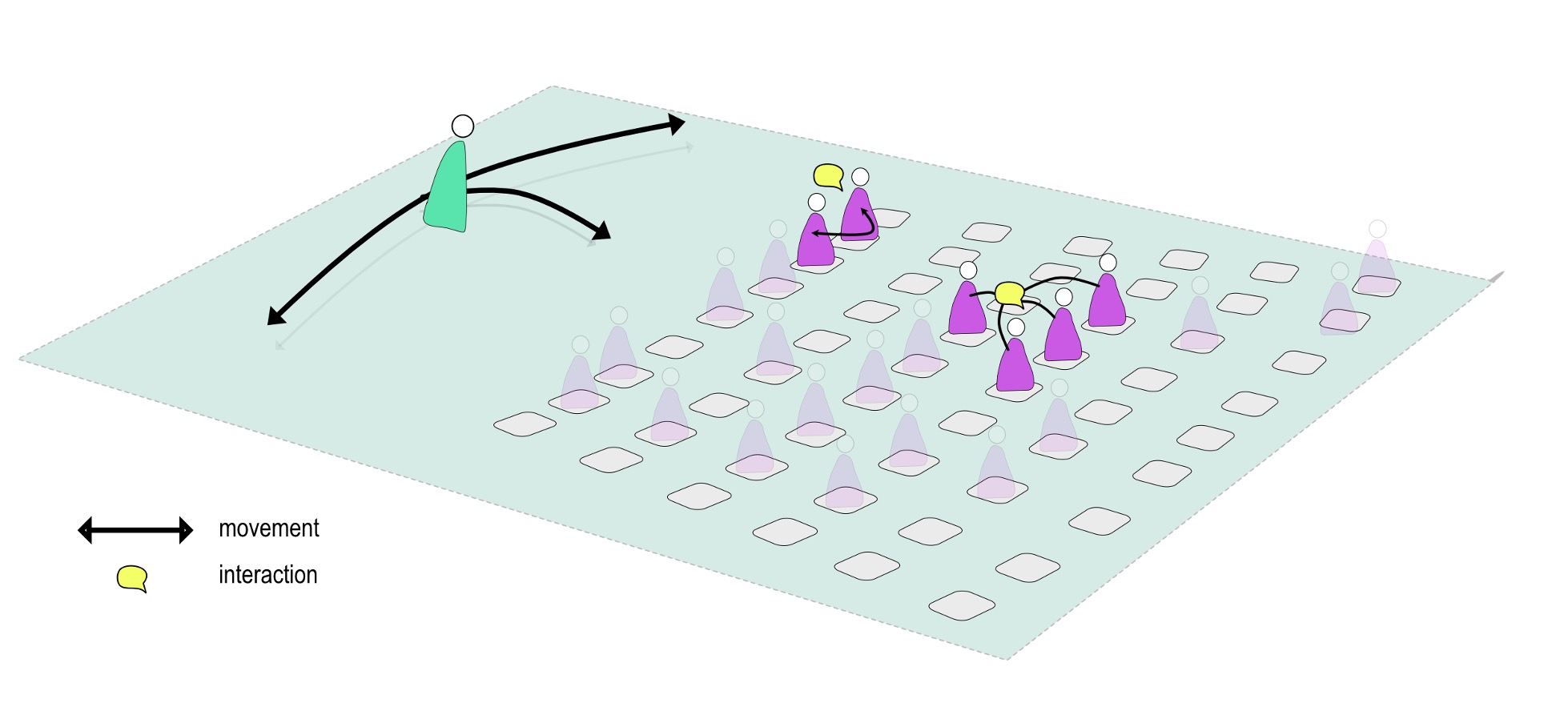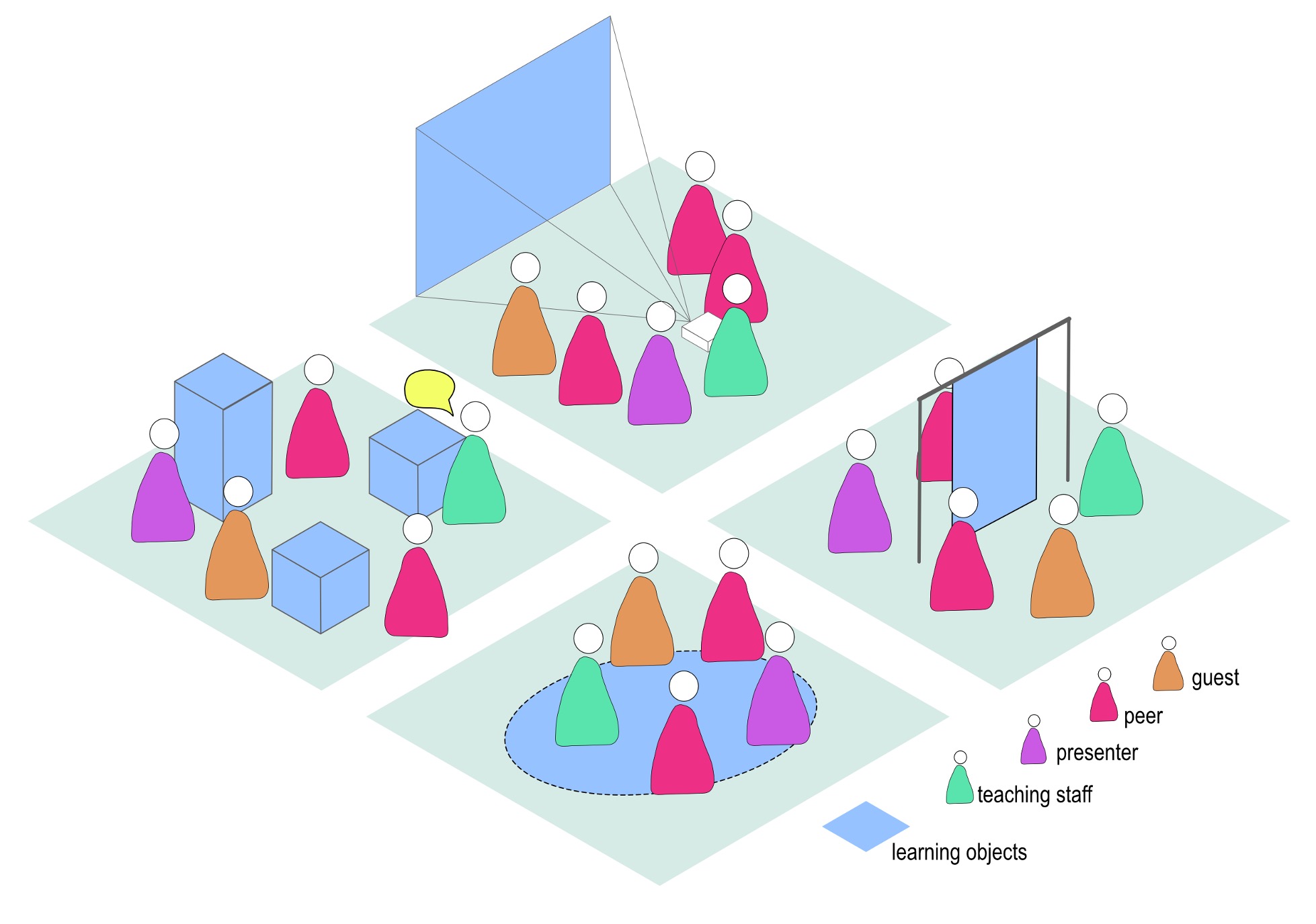Supportive Learning Environments
Supportive Learning Environments
Wellbeing essentials
Wellbeing is a complex topic that extends beyond learning design, and it can be daunting to consider how to incorporate practices that foster wellbeing into teaching practice. Wellbeing essentials (Baik, et al, 2017) offer a lens for understanding the types of experiences that characterise supportive learning environments. These concepts offer a series of touchstones for reflecting on existing modes and enabling customisation and creative interpretation in your teaching practice. The following guidance outlines several wellbeing essentials, as well as strategies to incorporate these wellbeing essentials into the learning environment.
While considering these wellbeing essentials, it is also important to note that belonging may look different for students with diverse backgrounds and identities or may include multiple ’belongings’. These can be supported by approaches that are Culturally Inclusive.
(Wellbeing essentials modified from Baik, et al, 2017, along with the Universal Design for Learning Guidelines and Thompson & Song (2021).
Wellbeing Essentials
-
Connection
Learning design enables students to have sense of belonging. Positive relationships between teachers, students, peers and guests are encouraged. Students feel connected to peers, disciplinary contexts and teachers through social interactions and learning experiences.
This could look like:
- Acknowledging the diverse identity/s of students in learning activities
- Contextualising disciplinary contexts and values
- Careful facilitation of peer engagement and activities
-
Agency
Agency is enabled when autonomous motivation and experiences of autonomy are designed into learning. Students who have ownership and agency over learning are able see the purpose of learning activities and their role within the learning environment.
This could look like:
- Offering choice in engagement mode, assignment type or group composition
- Incorporating self and peer review processes
-
Responsiveness
The link between learning activities, teaching activities and feedback are visible to students. Students can understand how their learning informs teaching practices. There is reciprocity and awareness of relational roles between teacher and student. Learning from mistakes is encouraged.
This could look like:
- Student-led activities that shift the role of teacher, student and peer
- Incorporating moments of student reflection and feedback into assignment structures.
- Articulating purpose and correlation between learning activities and subject aims
-
Enabling competence
Students can navigate and act in multiple ways to participate in learning activities, delivery modes, interactions and assessments. Students feel capable of managing tasks and challenges.
This could look like
- Modelling success and failure
- Narrating the learning journey
- Offering challenges with linked support and feedback processes
Supportive strategies
Supportive learning environments can be facilitated in practical ways with strategies that assist in incorporating empathy, modelling fallibility and including student interests and perspectives into your teaching.
In terms of delivery, content and resources can be curated to be inspiring and relevant, helping support autonomous motivation. Interactive activity can be designed to instil a sense of belonging to various scales of community, while helping identify students at risk of social isolation. Finally, in the realm of assessment, project briefs can include clear expectations to reduce unanticipated stress points, and formative feedback. (Thompson & Song, 2021)
The tables act as matrix across the various dimensions (activities, roles, qualities) and learning design realms (delivery, interaction, assessment) of strategies that foster supportive learning environments.
Curating Inspiring Delivery
Learning Activity | Teacher Roles | Student roles | Teacher Qualities and Strategies |
Lecture | Performer | Listener, questioner | Offer empathy and approachability (put a face to disembodied announcement / emails) |
Practical Demonstration | Demonstrator | Listener, questioner, demonstrator | Demonstrate expertise and fallibility (model risk-taking, iterative processes) |
Curated content | Curator | Reader, Viewer, Proposer, co-selector, | Integrate students’ interests into content selection, and consider students’ developing knowledge in the presentation of different sections of content |
Site visit | Guide | Observer, detective, analyst, explorer | Consider logistical challenges of access and offer alternatives where possible |
Promoting Inclusive Interaction
Learning Activity | Teacher Roles | Student roles | Teacher Qualities and Strategies |
Panel discussion | Moderator | Listener, questioner, Panelist, Chair, respondent | Select guests reflective of student interests and offer intercultural experiences; Develop protocols for etiquette (agreed by consensus with students) |
Group discussion | Facilitator | Participant, | Allow choice for interactive engagement modes, maximising student access; |
Collaborative session | Convener | Collaborator, project leader, documenter, coordinator | Design group projects that can alleviate stress around group management; allow for different levels of student familiarity with platforms. Provide opportunities to choose or develop roles in collaborative projects. |
Designing Supportive Assessment
Learning Activity | Teacher Roles | Student roles | Teacher Qualities and Strategies |
Assessment design | Manager | Responder | Design rubrics that will offer clarity, transparency and consistency for the values applied when reviewing student submissions and provide another lens for understanding content. Provide opportunities for experimentation and failure to be documented as part of the assessment process. Incorporate peer and/or self-review processes where appropriate. Consider flexibility in formats for subject deliverables. |
Formative feedback, Summative assessment | Critic, Assessor | Presenter, reviewer | Aim for clarity and transparency in project documentation; Use a positive and supportive tone in feedback; Ensure teaching staff deliver consistent information |
Design review | Organiser, Assessor, Critic, Moderator | Presenter, peer-reviewer | Organise and moderate design crits as to provide supportive and equitable learning-focused opportunities; Translate and frame guest criticism as needed to assist in this |
Relational spatial practices
Built environment professions have inherent disciplinary inclinations towards spatial practices, so the premise that physical learning environments impact on learning experiences will be no surprise. However, while discussions of the design, functionality and accommodations of teaching environments are common, less emphasis is placed on how practices that attend to the spatial dynamics of wellbeing may also contribute to supportive learning environments.
The purposeful design of the relations between the learner, learning object and learning realm can create the conditions for supportive learning environments. A range of linked social and spatial experiences can also prepare students for diverse work contexts and build confidence. By enabling multiple learning opportunities and modes of expression student identity, agency and contribution to the learning community can be enhanced.
This page offers some spatial tactics for supportive learning environments.
Delivery: Presentation

Enabling opportunities to foster connections in lectures and presentations is key to encouraging a network of interactions among students, peers, and teachers. It is crucial to integrate elements of cross-peer discussion and breakout moments into these educational settings. Such techniques are specifically designed to challenge and disrupt the traditional learner-teacher dynamic and orientation that are commonly seen in lectures or presentation spaces.
Of course, when designing for increased student agency, choosing the mode of deliverable and presentation format will need to be supported by learning design and assessment practices to ensure clarity and equity.
Interaction: Group/Teamwork

When designing learning experiences, it is important to carefully consider how the coordination of physical space can enhance interactivity. For instance, adopting a roundtable setup places the focus squarely on the learning object, with teachers, students, and peers all having equal positioning. In this mode, the teacher transitions to the role of a facilitator or consultant, actively engaging with teams in various formats, including micro-offices, conferences, or workshops. Such a reorientation is beneficial as it diminishes the traditional adversarial dynamic often perceived between reviewers, learners, and peers, fostering instead a responsive and collaborative environment amongst students, guests, and teachers.
Assessment: Presentations & Design Reviews

Enabling purposeful spatial arrangements is key to foregrounding student agency and competence in the learning environment. In this context, students are given the opportunity to design, organize, and plan their interactions with learning objects, as well as the way assessors and peers engage with them. Various forms of engagement can be incorporated, such as expanded desk critiques, exhibition formats, or guided tours. This method not only highlights student agency and competence but also fosters a sense of connectedness within the community of peers. Furthermore, this setup allows for the possibility of conducting multiple reviews simultaneously, enhancing the dynamic and interactive nature of the learning experience.
Additional resources
Explore a curated selection of resources that complement our focus on supportive learning environments, offering further insights and practical tools to enhance the relational and spatial dynamics in educational settings.
- MCSHE’s Enhancing Student Mental Wellbeing: A Handbook for Academic Educators (2017) and ‘Enhancing Student Wellbeing’ website
- Patrick T. Terenzini, ‘Rethinking effective student learning experiences,’ Inside Higher Education (29 July 2020)
- Benjamin G. Veness, The Wicked Problem of University Student Mental Health (2016 report)
- Universal Design for Learning (Learning Environments)